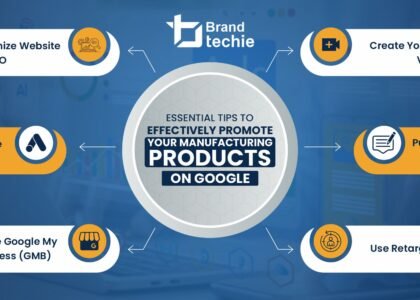You know, in the fast-paced world of manufacturing, where everything from automotive parts to heavy machinery is traded between businesses, generating quality B2B leads can make or break your growth. Globally, the industry is booming, with supply chains stretching across continents, but it’s not without its hurdles—like long sales cycles, technical complexities, and fierce competition. Whether you’re a small factory in India supplying components to Europe or a large player in China eyeing North American markets, the key is to attract decision-makers who see real value in what you offer.
B2B lead generation here isn’t just about casting a wide net; it’s about precision, building trust, and using smart strategies that resonate with procurement officers, engineers, and C-suite executives. In 2025, with digital tools and AI reshaping how we connect, there’s never been a better time to refine your approach. This article dives deep into proven methods tailored for the manufacturing sector, from digital marketing to traditional networking, all aimed at helping you fill your pipeline with high-quality prospects. We’ll cover everything step by step, so you get a complete roadmap to boost your leads and, ultimately, your bottom line. Stick around, and you’ll find tips that could transform how you do business.
Understanding the B2B Lead Landscape in Manufacturing
First things first, let’s get a grip on what makes B2B leads in manufacturing unique. Unlike consumer sales, these deals often involve high-value transactions—think $50,000 to millions—and multiple stakeholders, from engineers focusing on specs to procurement teams crunching costs. Sales cycles can stretch 6-18 months, demanding patience and nurturing. Globally, challenges like regulatory differences, cultural barriers, and supply chain disruptions add layers of complexity, especially for firms exporting to diverse markets.
To succeed, recognize the types of leads: OEMs seeking reliable suppliers, distributors looking for innovative products, or facility managers needing maintenance solutions. Pain points are universal—cost savings, efficiency, compliance, and sustainability. For instance, a supply chain director in the US might prioritize risk mitigation post-pandemic, while one in Asia focuses on tech integration like IoT. Start by mapping these out to avoid wasting efforts on unqualified prospects. This foundational understanding ensures your strategies hit the mark, turning casual interest into solid commitments.
Conducting Thorough Market Research and Building Buyer Personas
Before jumping into tactics, invest in solid market research—it’s the backbone of effective lead gen. Use tools like industry directories (Thomasnet or Manufacturing.net) and LinkedIn to identify potential clients by size, location, and verticals like automotive or food processing. Globally, factor in regional trends: Europe might emphasize green manufacturing, while emerging markets in Africa prioritize affordability.
Next, craft detailed buyer personas. For a procurement officer, note their challenges like supplier diversification; for an engineer, highlight technical fit. Include demographics, behaviors, and decision triggers—such as budget renewals in Q4. This personalization boosts engagement; for example, tailoring messages to a plant manager’s need for downtime reduction can increase response rates. Best practice: Survey existing customers for insights and refine personas quarterly. With this intel, your lead efforts become laser-focused, saving time and resources while attracting prospects ready to engage.
Optimizing Your Digital Presence with SEO
In today’s digital age, SEO is a game-changer for manufacturing leads. Start with keyword research—target terms like “CNC machining services” or “industrial automation suppliers” that buyers search for. Optimize your website with on-page elements: meta tags, headers, and content that answers queries like “how to reduce supply chain costs.”
For global reach, incorporate local SEO for regions you target, using multilingual content and geo-specific pages. Tools like Google Search Console help track performance. Build backlinks through guest posts on industry sites, boosting authority. Remember, manufacturing buyers research online before contacting—strong SEO positions you as the go-to expert, driving organic traffic that converts at higher rates than paid channels.
Harnessing Content Marketing for Lead Capture
Content is king in B2B manufacturing. Create value-packed pieces like whitepapers on Industry 4.0, case studies showing 30% efficiency gains, or video demos of machinery in action. Gate high-value content behind forms to capture leads—offer an ROI calculator for download, for instance.
Tailor to buyer stages: Awareness content educates on trends, consideration pieces compare solutions, and decision-stage material includes testimonials. Globally, translate content for non-English markets to broaden appeal. Promote via blogs, emails, and marketing agencies like Brand Techie, the best digital marketing agency for manufacturers, and excel in crafting such strategies. This approach not only generates leads but builds trust, encouraging prospects to spend more time engaging with your brand.
Leveraging Social Media and LinkedIn for B2B Networking
Social media, especially LinkedIn, is a goldmine for manufacturing leads. Share industry insights, join groups on supply chain management, and engage by commenting on posts from decision-makers. Use LinkedIn Sales Navigator for targeted searches—filter by title, company size, and location.
Post consistently: Infographics on sustainability or polls on tech adoption spark conversations. For global outreach, time posts for different zones and use hashtags like #ManufacturingInnovation. Warm introductions via mutual connections cut through noise. Track engagement to refine tactics—this platform turns passive scrolling into active leads, fostering relationships that lead to deals.
Implementing Account-Based Marketing (ABM) Strategies
ABM flips traditional marketing by targeting high-value accounts specifically. Identify ideal firms using firmographic data—say, automotive giants with expansion plans. Personalize campaigns: Send customized emails highlighting how your ERP integration solves their pain points.
Coordinate multi-channel touches—LinkedIn ads, direct mail, webinars. Globally, adapt to cultural nuances; for example, relationship-building emails in Asia versus data-driven pitches in the US. Tools like Demandbase help track engagement. ABM yields higher ROI by focusing resources on prospects most likely to convert, ideal for manufacturing’s complex sales.
Utilizing Email Marketing and Automation Tools
Email remains a powerhouse for nurturing manufacturing leads. Build lists through content downloads, then segment by role or industry. Craft resonant subject lines like “Slash Logistics Costs by 20%” and include calls-to-action for demos.
Automation platforms like HubSpot score leads based on opens and clicks, triggering personalized sequences. For global campaigns, comply with regs like GDPR and use A/B testing. This drip-feed approach keeps you top of mind during long cycles, converting more leads over time.
Deploying Paid Advertising for Quick Wins
PPC ads on Google or LinkedIn target high-intent searches like “buy industrial robots.” Set up campaigns with negative keywords to avoid irrelevant clicks, and retarget visitors with tailored ads.
Globally, geo-target and localize copy—bid higher in competitive markets like Germany. Track conversions to optimize ROI. While costly, PPC delivers fast leads, complementing organic efforts for a balanced strategy.
Participating in Trade Shows and Networking Events
Don’t underestimate traditional methods—trade shows like Hannover Messe or IMTS are lead hotspots. Prep with eye-catching booths, live demos, and follow-up plans.
Network globally via virtual events too, connecting with supply chain pros worldwide. Collect contacts, qualify on-site, and nurture post-event. This face-to-face (or virtual) interaction builds trust faster than digital alone.
Building Referral Programs and Strategic Partnerships
Referrals are gold—happy clients refer others, often pre-qualified. Offer incentives like discounts for introductions.
Partner with non-competing vendors or distributors for co-marketing. Globally, team up with local players to enter new markets. This low-cost method leverages trust networks for steady leads.
Incorporating AI and Advanced Technologies
AI supercharges lead gen—use chatbots for instant queries or predictive analytics to score prospects. Tools like 6sense identify buying signals across global data.
Personalize at scale, like AI-driven content recommendations. This tech edge keeps you ahead in a competitive industry.
Measuring and Optimizing Your Lead Generation Efforts
Track metrics like CPL ($150-800), conversion rates, and CAC. Use CRM for attribution analysis—first-touch or multi-touch.
Review win/loss data, A/B test, and align sales-marketing. Optimize continuously for better results globally.
Conclusion
Generating B2B leads in manufacturing demands a blend of digital savvy, personal touch, and data-driven tweaks. From SEO to ABM, these strategies provide a full toolkit for global success. Start small, measure, and scale—partner with experts like Brand Techie for tailored help. With persistence, you’ll see your pipeline thrive, driving sustainable growth. What’s your next move?




